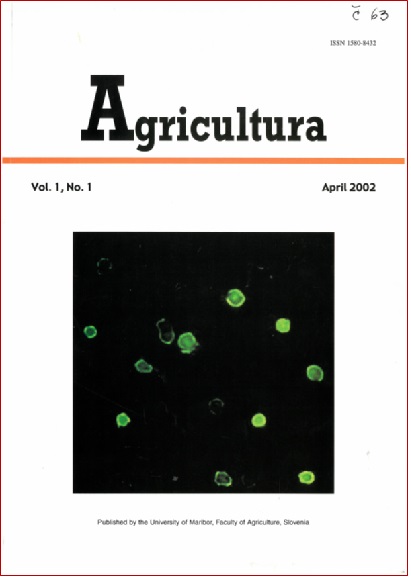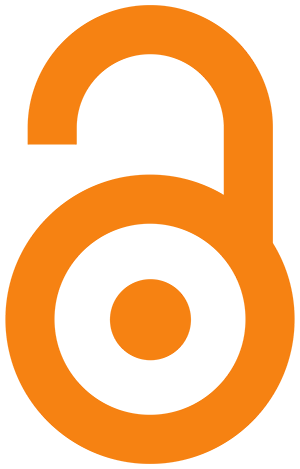Porcine circovirus structure and replication: a minireview
Abstract
Porcine circoviruses (PCV) are nonenveloped, and have covalently linked circular single stranded (ss) DNA genome. They are the smallest animal viruses capable of independent replication. Circoviruses are thought to use a rolling circle strategy for DNA replication, a unique feature among animal viruses. Three major viral proteins were identified in PCV infected cells: Rep and Rep', involved in genome replication, and the capsid protein. Porcine circoviruses have to rely heavily on the host cell machinery for their replication. Although PCV1 was described in 1974, interest in these viruses has significantly increased only in late nineties, when PCV2 was discovered and linked to several porcine disorders. Our knowledge of porcine circoviruses replication and the basis for their pathogenesis is still very limited.
Downloads
References
Dulac GC, Afshar A. Porcine circovirus antigens in PK15 cell lines (ATCC CCL - 33) and evidence of antibodies to circovirus in Canadian pigs. Can. J. Vet. Res. 1989; 53: 431-33.
Gibbs MJ and Weiller GF. Evidence that a plant virus switched hosts to infect a vertebrate and then recombined with a vertebrate-infecting virus. Proc. Natl. Acad. Sci. USA 1999; 96: 8022-27.
Kennedy S, Moffett D, McNeilly F, Meehan B, Ellis J, Krakowka S, and Allan GM. Reproduction of lesions of postweaning multisystemic wasting syndrome by infection of conventional pigs with porcine circovirus type 2 alone or in combination with porcine parvovirus. J. Comp. Pathol. 2000; 122: 9-24.
Kiupel M, Stevenson GW, Choi J, Latimer KS, Kanitz CL, Mital SK. Viral replication and lesions in BALB/c mice experimentally inoculated with porcine circovirus isolated from a pig with postweaning multisystemic wasting disease. Vet. Pathol. 2001; 38: 74-82.
Koonin EV, Ilyina TV. Computer-assisted dissections of rolling-cycle DNA replication. Biosystems 1993, 30:241-68.
Krakowka S, Ellis JA, McNeilly F, Ringler S, Rings DM, Allan G. Activation of the immune system is pivotal event in the production of wasting disease in pigs infected with porcine circovirus -2 (PCV-2). Vet. Pathol. 2001; 38: 31-42.
Liu Q, Tikoo SK, and Babiuk LA. Nuclear localization of the ORF2 protein encoded by porcine circovirus type 2. Virology 2001; 285: 91-99.
Lukert P, de Boer GF, Dale JL, Keese P, McNulty MS, Randles JW, Tischer I. The Circoviridae. In Murphy FA et al. (eds.), Virus taxonomy: Sixth report of the International Committee on Taxonomy of Viruses. Springer-Verlag, Vienna / New York, 1995: 166-68.
Mankertz A, Persson F, Markentz J, Blaess G, and Buhk HJ. Mapping and characterization of the origin of DNA replication of porcine circovirus. J. Virol. 1997; 71: 2562-66.
Mankertz A, Mankertz J, Wolf K, Buhk HJ. Identification of a protein essential for replication of porcine circovirus. J. Gen. Virol. 1998a; 79: 38184.
Mankertz J, Buhk HJ., Blaess G, Mankertz A. Transcription analysis of porcine circovirus (PCV). Virus Genes 1998b; 16: 267-276
Mankertz A, Hillenbrand B. Replication of porcine circovirus type 1 requires two proteins encoded by the viral rep gene. Virology 2001; 279: 429-38.
McNeilly F, Allan GM, Foster JC, Adair BM, McNulty MS. Effect of porcine circovirus infection on porcine alveolar macrophage function. Vet. Immunol. Immunopathol. 1996; 49: 295-306.
Meehan BM, Creelan JL, McNulty MS, Todd D. Sequence of porcine circovirus DNA: Affinities with plant circoviruses. J. Gen. Virol. 1997; 78: 221-27.
Meehan BM, McNeilly F, Todd D, Kennedy S, Jewhurst VA, Ellis JA, Hassard LE, Clark EG, Haines DM, Allan GM. Characterization of novel circovirus DNAs associated with wasting syndromes in pigs. J. Gen. Virol. 1998; 79: 2171-79.
Morozov I, Sirinarumitr T, Sorden SD, Halbur PG, Morgan MK, Yoon K, Paul PS. Detection of a novel strain of porcine circovirus in pigs with postweaning multisystemic wasting syndrome. J. Clin. Microbiol. 1998; 36: 2535-41.
Nawagitgul P, Morozov I, Bolin SR, Harms PA, Sorden SD, and Paul PS. Open reading frame 2 of porcine circovirus type 2 encodes a major capsid protein. J. Gen. Virol. 2000; 81: 2281-87.
Niagro FD, Forsthoefel AN, Lawther RP, Kamalanathan L, Ritchie BW, Latimer KS, Lukert PD. Beak and feather disease virus and porcine circovirus genomes: intermediates between the geminiviruses and plant
circoviruses. Arch. Virol.1998; 143: 1723-44.
Rosell C, Segales J, Ramos-Vara JA, Folch JM, Rodriguez-Arrioja GM, Duran CO,Balasch M, Plana-Duran J, Domingo M. Identification of porcine circovirus in tissues of pigs with porcine dermatitis and nephropathy syndrome. Vet. Rec. 2000; 146: 40-43.
Shibahara T, Sato K, Ishikawa Y, Kadota K. Porcine circovirus induces B lymphocyte depletion an pigs with wasting disease syndrome. J. Vet. Med. Sci. 2000; 62: 1125-31.
Stevenson GW, Kiupel M, Mittal SK, Kanitz CL. Ultrastructure of porcine circovirus in persistently infected PK-15 cells. Vet. Pathol. 1999; 36: 36878.
Stevenson GW, Kiupel M, Mittal SK, Choi J, Latimer KS, Kanitz CL. Tissue distribution and genetic typing of porcine circoviruses in pigs with naturally occurring congenital tremors. J. Vet. Diagn. Invest. 2001; 13: 57-62.
Tischer I, Rasch R, Tochterman G. Characterization of papovavirus- and picornavirus -like particles in permanent pig kidney cell lines. Zentralbl. Bacteriol. [A] 1974; 226: 153-67.
Tischer I, Gelderblom H, Vettermann W, Koch MA. A very small porcine virus with circular single-stranded DNA. Nature 1982; 295: 64-66
Tischer I, Peters D, Rasch R, Pociuli S. Replication of porcine circovirus: induction by glucosamine and cell cycle dependence. Arch. Virol. 1987; 96: 39-57.
Tischer I, Buhk HJ. Viral DNA from cells infected with porcine circovirus. Zentralbl. Bakt. Hyg. [A] 1988; 270: 280-87.
Tischer I, Bode L, Peters D, Pociuli S, Germann B. Distribution of antibodies to porcine circovirus in swine populations of different breeding farms. Arch. Virol. 1995a; 140: 737-43.
Tischer I, Peters D, Pociuli S. Occurrence and role of an early antigens and evidence for transforming ability of porcine circovirus. Arch. Virol. 1995b; 140: 1799-1816.

